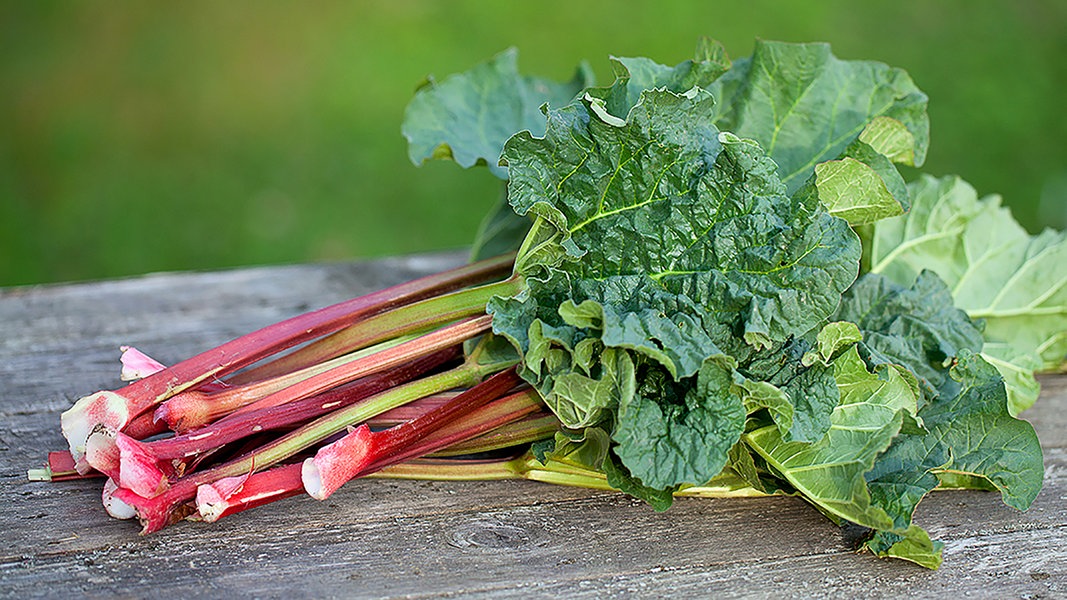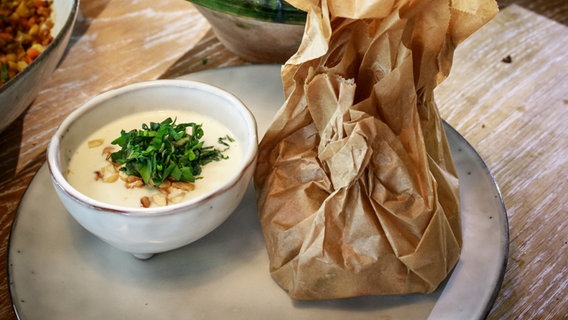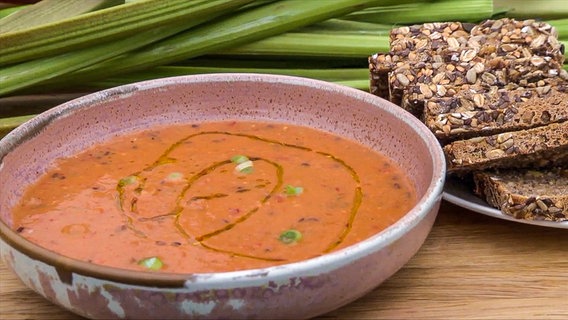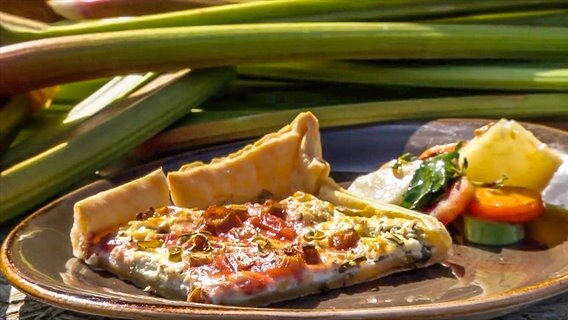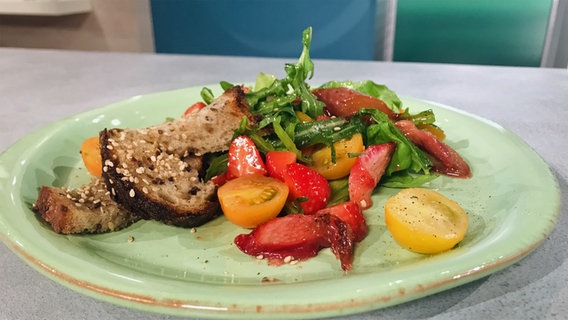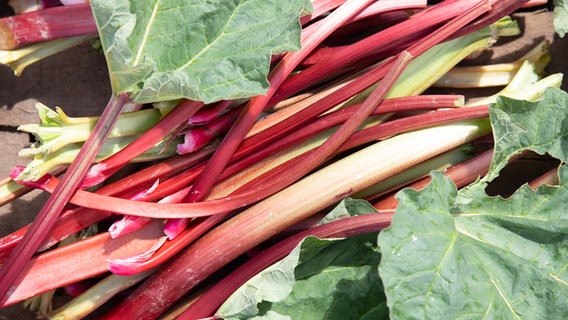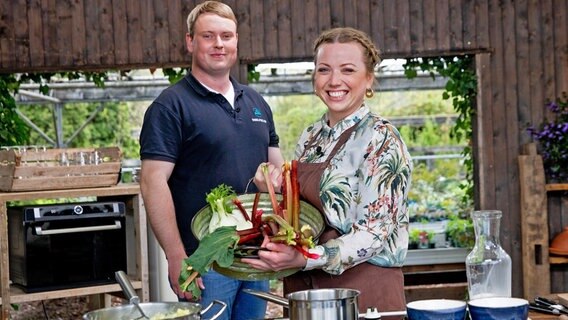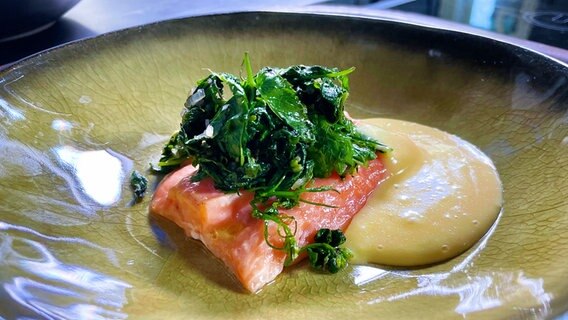Status: 04/30/2023 08:06 a.m
Spring is rhubarb time: With its fruity, slightly sour aroma, rhubarb tastes particularly good in desserts. Tips for preparation, purchase and storage as well as recipes.
Although rhubarb is usually prepared like a fruit, botanically it is a vegetable. It is also suitable as a hearty side dish or for soups. Depending on the variety, rhubarb has long greenish to red petioles. Red-stemmed tastes a little milder than green-stemmed. Only the petioles are used in the kitchen, not the leaves. Rhubarb should always be cooked/baked and not eaten raw.
Peel the rhubarb and prepare as a compote
Before cooking, wash the stalks, peel thinly and cut off the end of the stalk. Very young, tender rhubarb can also be processed unpeeled. Cut the sticks into pieces and steam them in a saucepan with sugar and a little water or juice to make a compote. Alternatively, you can stew the rhubarb covered in the oven. The compote tastes good with ice cream, pudding, quark and yoghurt.
Recipes for rhubarb cake and crumble
For a cake, cover a dough of your choice, such as a simple batter, with pieces of raw rhubarb and bake for about 40 minutes. The preparation of crumble is even easier: The sliced rhubarb is only covered with crumbles and also prepared in the oven. It tastes delicious mixed with strawberries, because the sweetness of the berries softens the acidity of the rhubarb. If you like it spicy, you can cook a fruity rhubarb chutney by adding shallots, ginger, spices and vinegar.
Further information
Store and freeze rhubarb properly
You can recognize fresh rhubarb when you go shopping because the stalks are firm and shiny and the edges are still moist. Since it dries out quickly, it should be prepared as soon as possible. Rhubarb – like asparagus – can be kept in the refrigerator for a few days wrapped in a damp cloth. The sticks can also be frozen well, but before that they should be washed, dried, peeled and cut into pieces. As with asparagus, the rhubarb season ends on June 24th, St. John’s Day. After that, the local vegetables can no longer be found fresh on markets and in supermarkets.
Low in calories – lots of healthy vitamins and fiber
By the way, rhubarb is not only delicious, but also low in calories and very healthy because of its high fiber and vitamin content. Since it contains plenty of potassium as well as malic and citric acid, it has a digestive effect and is therefore well suited for a spring cure.
Oxalic acid in rhubarb deprives the body of calcium
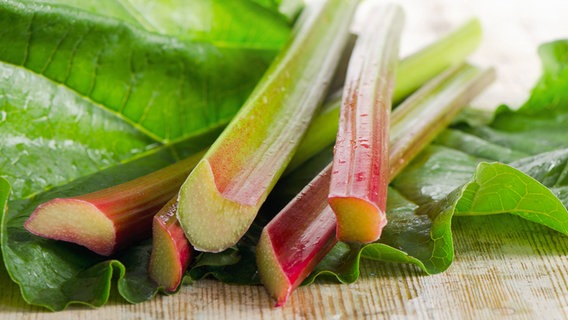
As with asparagus, the rhubarb season ends on June 24th. After that, the plant needs to recover.
In addition to healthy substances, the vegetables also contain a relatively large amount of oxalic acid. It can be toxic when consumed in large quantities and also depletes calcium from the body. If you eat rhubarb with milk, vanilla sauce or other calcium-rich foods, the calcium is bound and no longer absorbed by the body, but excreted. Rhubarb also loses some of its acidity when cooked. Incidentally, when the weather is warmer, the plant produces more oxalic acid. For this reason – and because rhubarb needs a break to regenerate – you should only eat it until the end of June.
Plant and harvest rhubarb in your own garden
Rhubarb is easy to plant in your own garden. The vegetable needs a semi-sunny location and nutrient-rich soil. As a permanent crop, it can remain in the same location for up to ten years. If you plant rhubarb in spring, you can harvest the first crunchy stalks the following year. Incidentally, rhubarb originally comes from China and has only been cultivated here since the middle of the 19th century: the first growing area was the Hamburg Vierlande.
More recipe ideas

